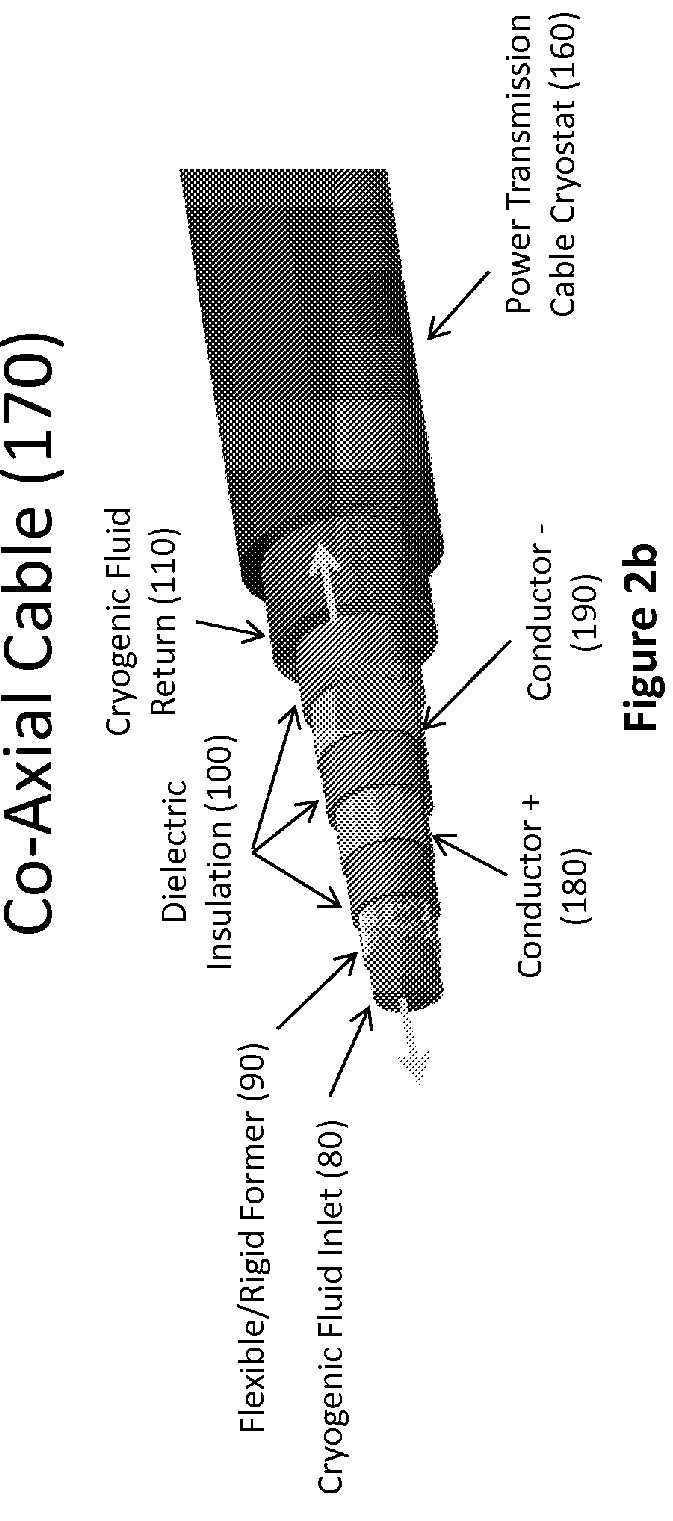High Power Dense Down-Hole Heating Device for Enhanced Oil, Natural Gas, Hydrocarbon, and Related Commodity Recovery
- Summary
- Abstract
- Description
- Claims
- Application Information
AI Technical Summary
Benefits of technology
Problems solved by technology
Method used
Image
Examples
Embodiment Construction
[0029]Advantages of Superconducting Power Transmission Cable or Cables
[0030]The temperature dependent electrical resistance of a normal (non-superconducting) metal conductor is given by the relation: R(T)=ρ(T)*L / A, where ρ(T) is the temperature dependent electrical resistivity which varies from material to material, L is the length of the conductor, and A is the conductor's cross sectional area. The electrical power loss (Ploss) in the non-superconducting transmission cable operating at a current (Iop) with electrical resistance (Rcable) is given by Ploss=Iop2*Rcable. Thus, the power dissipated along the non-superconducting transmission cable is directly proportional to its electrical resistance (R) and hence its length (L). Major disadvantages in state-of-the-art conventional down-hole heating systems compared with a zero resistance superconducting down-hole heating system described in this disclosure become immediately apparent. First, electrical power dissipated as heat is lost a...
PUM
 Login to View More
Login to View More Abstract
Description
Claims
Application Information
 Login to View More
Login to View More - R&D
- Intellectual Property
- Life Sciences
- Materials
- Tech Scout
- Unparalleled Data Quality
- Higher Quality Content
- 60% Fewer Hallucinations
Browse by: Latest US Patents, China's latest patents, Technical Efficacy Thesaurus, Application Domain, Technology Topic, Popular Technical Reports.
© 2025 PatSnap. All rights reserved.Legal|Privacy policy|Modern Slavery Act Transparency Statement|Sitemap|About US| Contact US: help@patsnap.com



